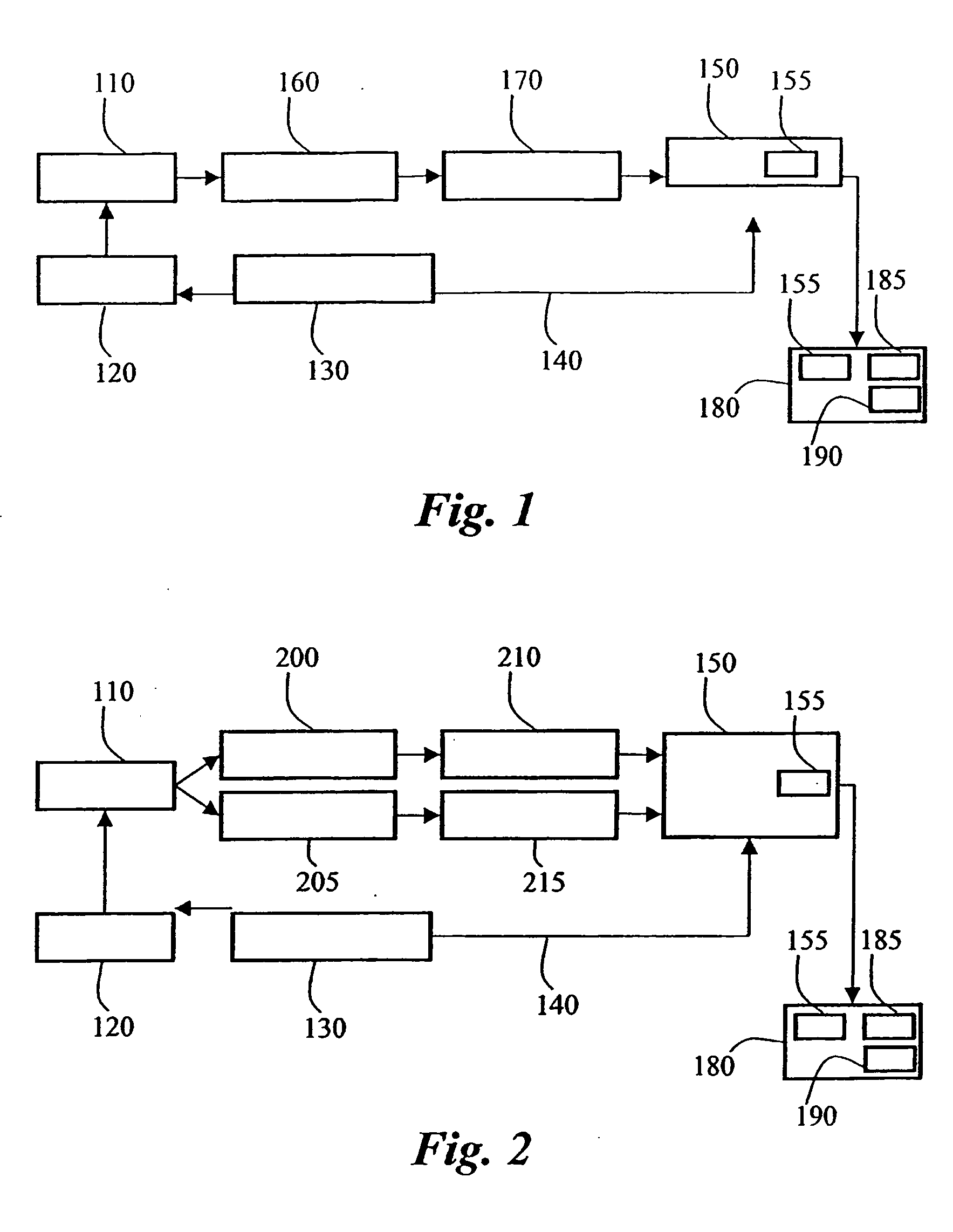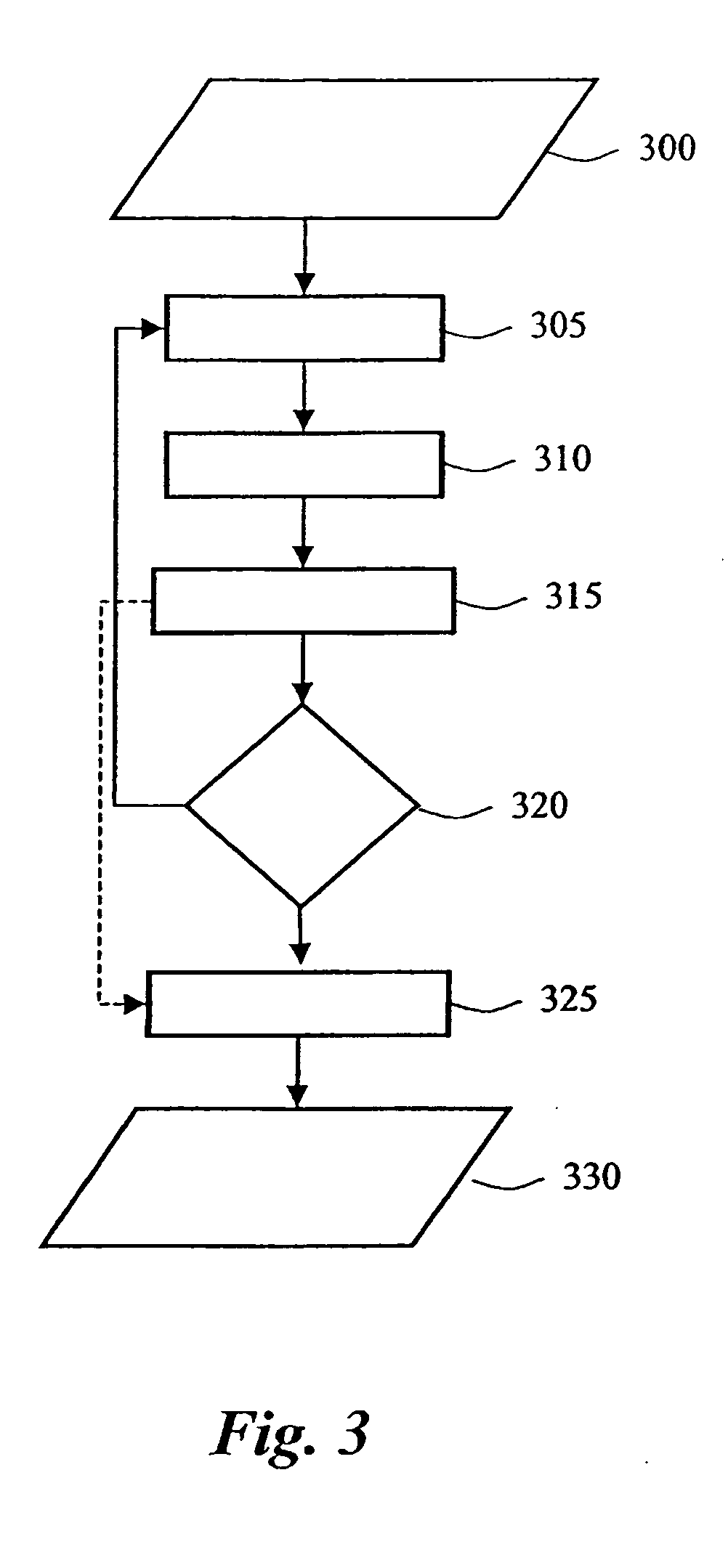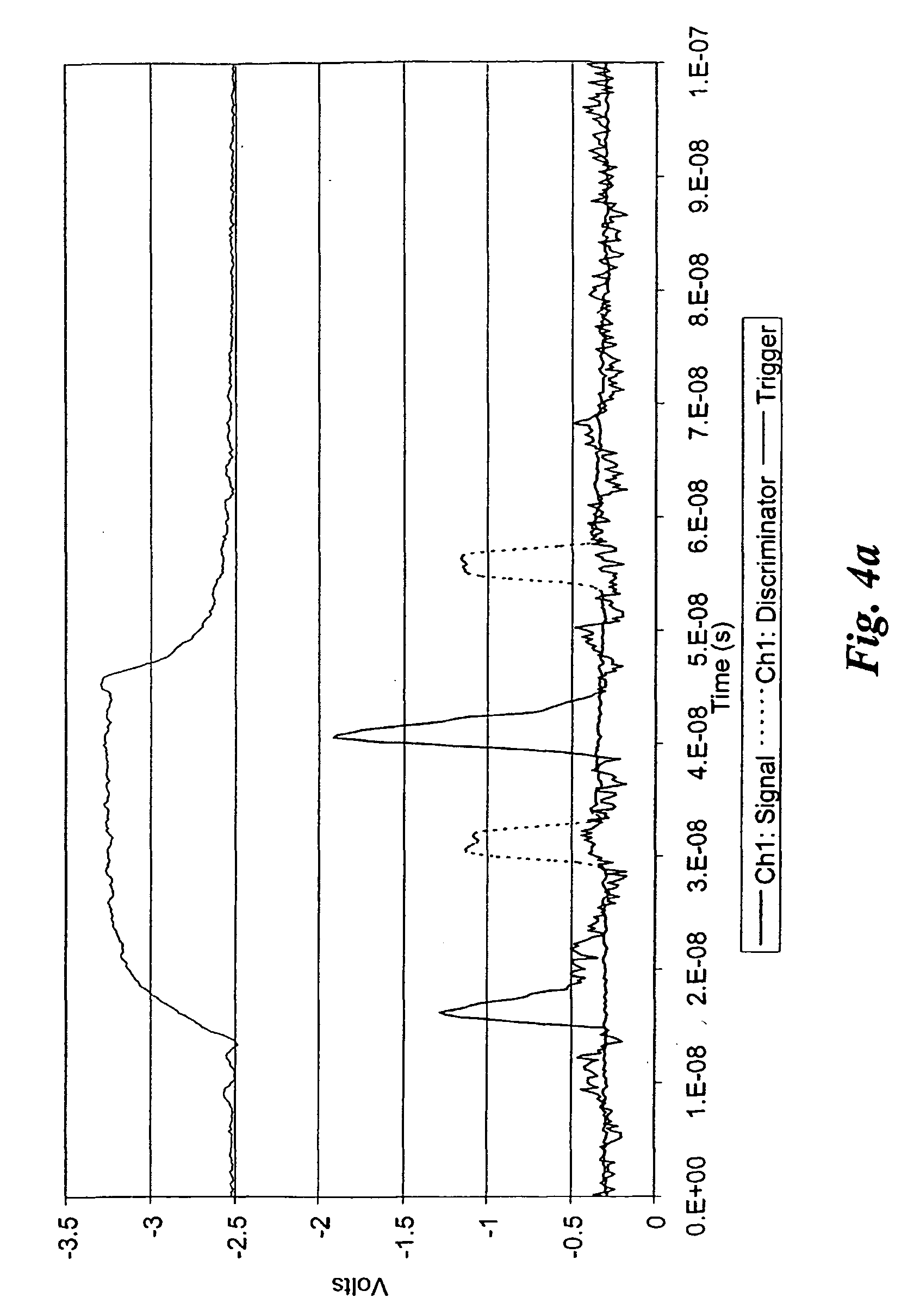System and method for time correlated multi-photon counting measurements
a multi-photon counting and counting system technology, applied in the field of time correlated multi-photon counting measurement, can solve the problems of only being able to count tcspc cannot, and the technique is only capable of counting a maximum of one photon
- Summary
- Abstract
- Description
- Claims
- Application Information
AI Technical Summary
Benefits of technology
Problems solved by technology
Method used
Image
Examples
Embodiment Construction
[0020] The inventive measurement system provided by the present invention will be described with reference to the schematic illustrations of FIG. 1-2. FIG. 1 shows a single channel TCMPC system according to the invention. Fluorescent material is contained in a sample 110. An excitation light source 120 for repeatedly irradiating the sample with pulses of excitation light is provided. The light source preferably a pulsed laser. A light source driving and controlling unit 130 comprises the laser power supply and is arranged to generate a triggering signal 140 to a photon timing unit 150. The repetition rate of the excitation light should be sufficiently low to allow a total decay of the fluorescence of the sample before the next exciting pulse. A pulsing frequency of for example around 200 kHz would commonly be appropriate. The duration of the pulse of excitation light should be significantly shorter than the fluorescence lifetime of the fluorophore in order to obtain reliable lifetim...
PUM
| Property | Measurement | Unit |
|---|---|---|
| time | aaaaa | aaaaa |
| pulsing frequency | aaaaa | aaaaa |
| fluorescence lifetime | aaaaa | aaaaa |
Abstract
Description
Claims
Application Information
 Login to View More
Login to View More - R&D
- Intellectual Property
- Life Sciences
- Materials
- Tech Scout
- Unparalleled Data Quality
- Higher Quality Content
- 60% Fewer Hallucinations
Browse by: Latest US Patents, China's latest patents, Technical Efficacy Thesaurus, Application Domain, Technology Topic, Popular Technical Reports.
© 2025 PatSnap. All rights reserved.Legal|Privacy policy|Modern Slavery Act Transparency Statement|Sitemap|About US| Contact US: help@patsnap.com



